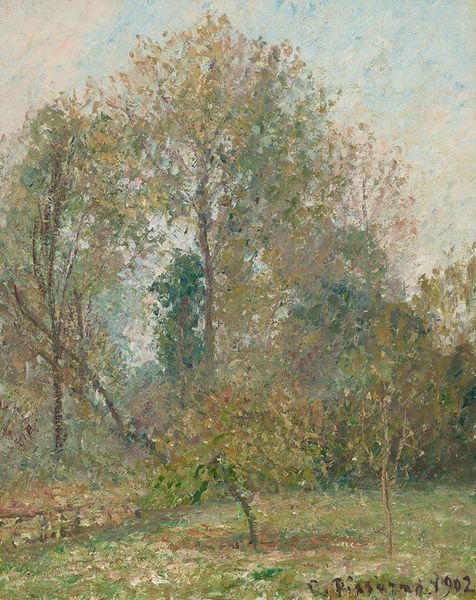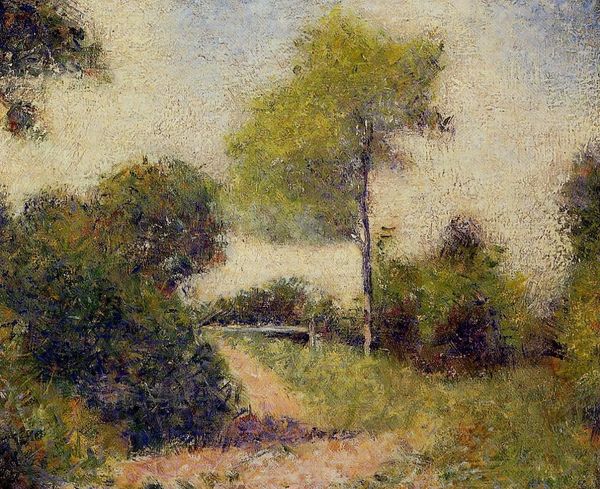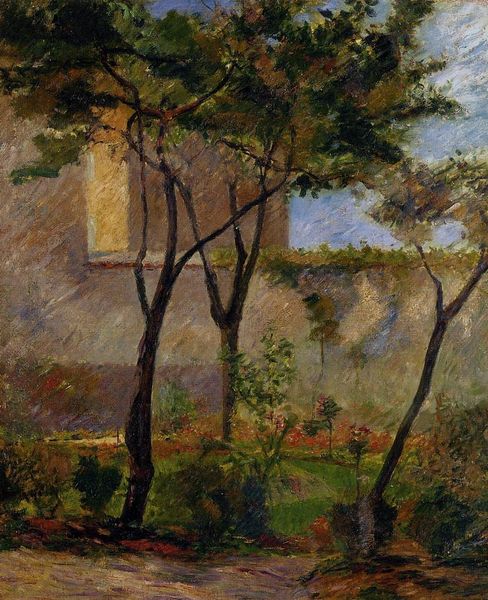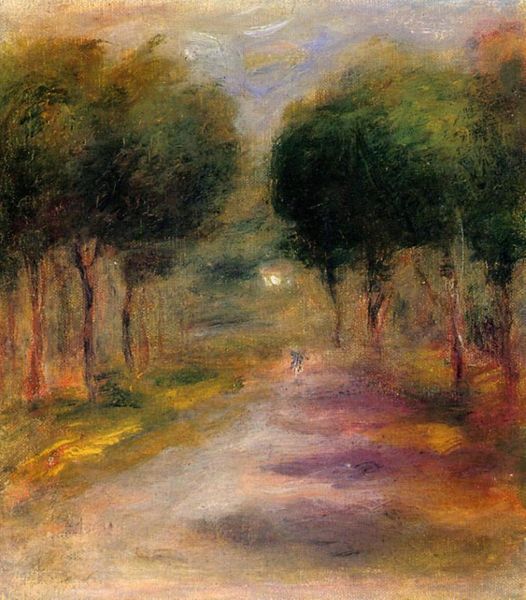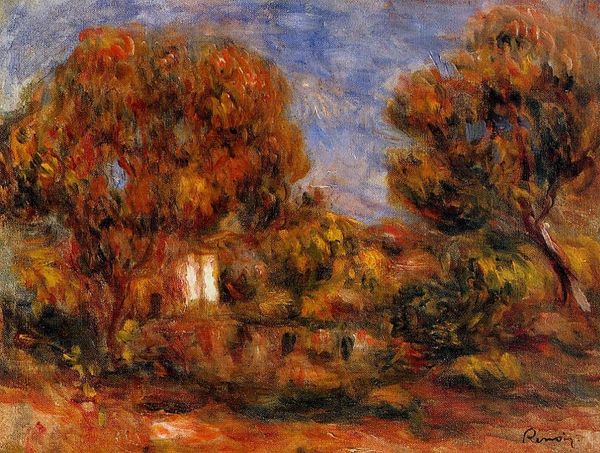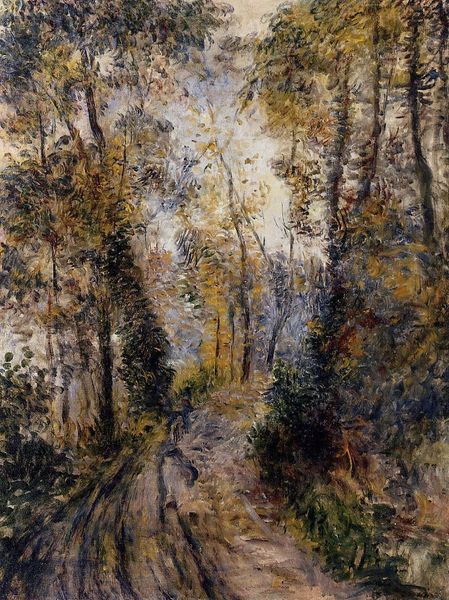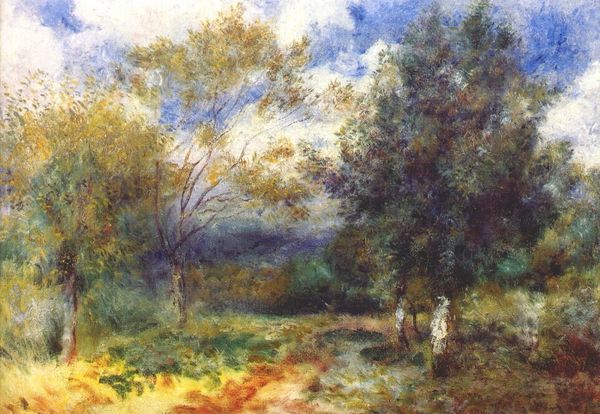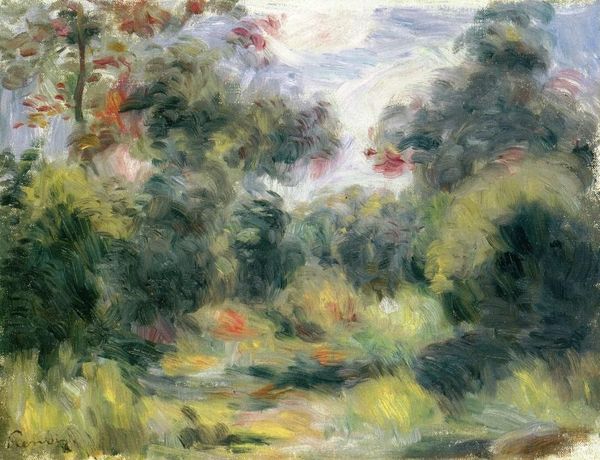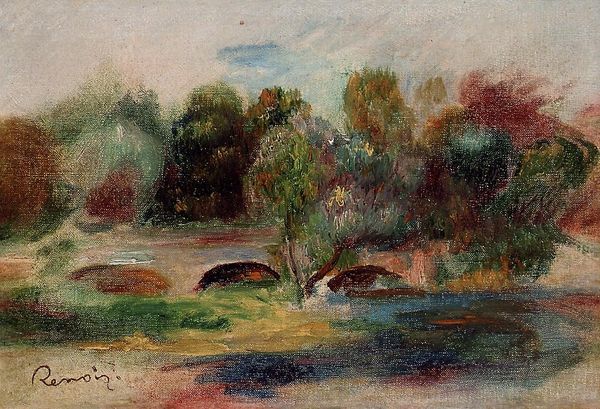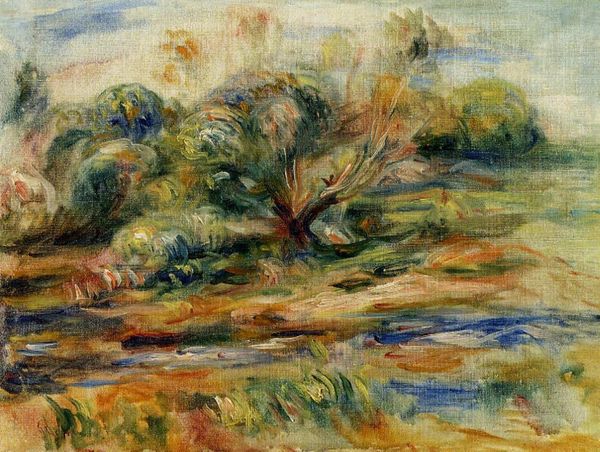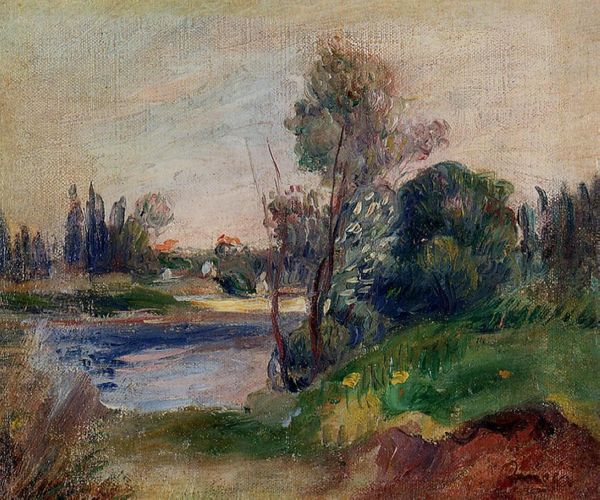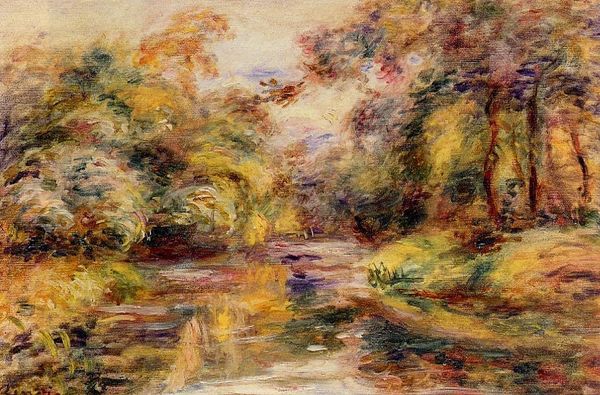
Copyright: Public domain
Paul Gauguin created this oil on canvas landscape, its precise date unknown, but likely toward the end of the 19th century. Here, Gauguin uses a post-impressionist style to depict a landscape in France. In its time, this was a rejection of traditional academic painting, and the institutional structures that supported it. Artists like Gauguin moved away from realistic depictions and towards more subjective, expressive interpretations of the world. Consider the social and cultural context of late 19th-century France. Rapid industrialization, urbanization, and political upheaval were reshaping French society. Gauguin, like many artists of his time, was interested in exploring new forms of artistic expression that reflected these changes. He and others were critiquing the conservative norms of the art world and pushing the boundaries of what was considered acceptable. To fully appreciate art, we must consider the social conditions that shaped its production. By consulting historical documents, artists' letters, and contemporary reviews, we can gain a deeper understanding of art and its role in society.
Comments
No comments
Be the first to comment and join the conversation on the ultimate creative platform.
